When it comes to luxury interiors, few features are as sophisticated as a custom wine cellar. Much more than just storage, a wine cellar is a bold statement of status and identity, offering an opportunity to showcase prized collections while complementing various design aesthetics.
But how do you go about designing a custom bronze wine cellar? What features should you be looking for based on the size, value and nature of your client’s wine collection? What are the options for blending a wine cellar successfully into contemporary versus traditional interiors?
In this blog, we’ll explore the key design elements, customization options, and technical considerations that influence the practical and aesthetic character of custom bronze wine cellars, with advice on how to commission a cellar that complements your client’s wine storage needs.

What are my options for custom wine cellar design?
At Renaissance Genuine Solid Bronze, we have the capability to create completely custom wine cellar enclosures based on designers’ or architects’ unique concepts, but for reasons of practicality and cost, the majority of the wine cellars we manufacture are based on our three core product ranges: Nexus, Omnia and Revival.
Each of these products delivers a unique design aesthetic that adapts to a variety of interior styles, as well as some key practical features designed to meet the needs of most clients from the hobby collector through to commercial applications in the hospitality sector. Let’s take a closer look at each.
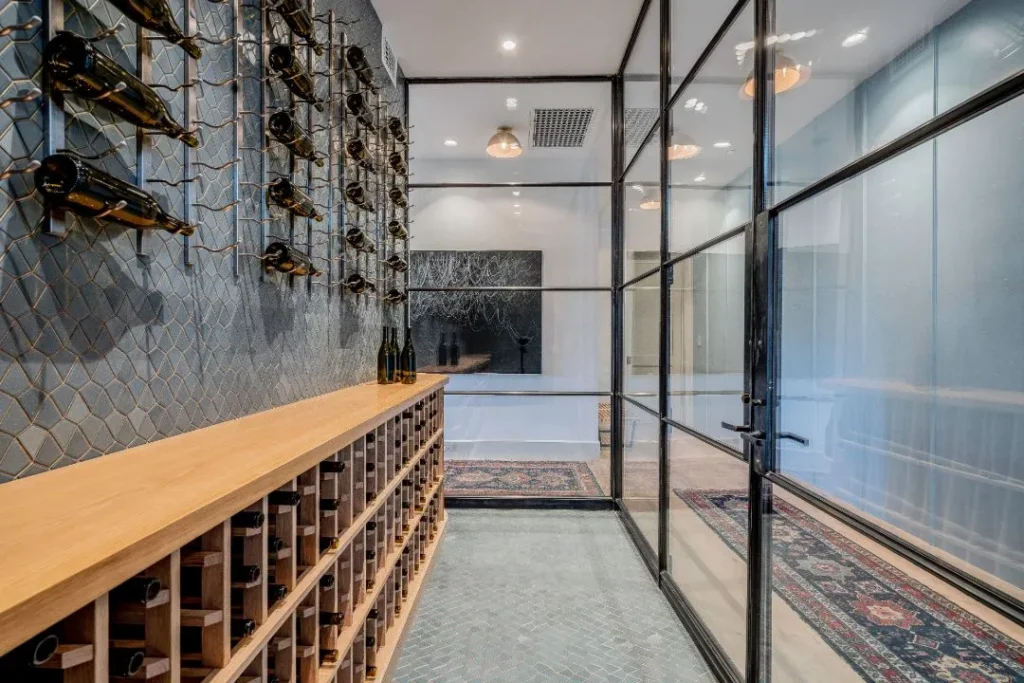
Nexus Wine Cellar Enclosure: A Modern Heirloom
Inspired by classic Crittall doors and the romantic geometry of Victorian-era factory windows, the Nexus wine cellar system brings architectural history into the heart of the home. Its distinctive multi-lite profile is lifted from the original steel windows of San Antonio’s historic Peden Steel Building — reimagined in smooth, solid bronze to meet today’s design and energy standards.
Crafted for installation into finished openings, Nexus blends heritage charm with high-performance engineering. Each enclosure features genuine bronze muntins, insulated glass, and matching transoms and sidelights, creating a refined architectural focal point for both classic and contemporary interiors.
Available in five hand-applied patina finishes and fully customizable to any layout, Nexus is more than functional; it’s a signature of taste. Advanced weatherstripping, multi-point locks, and our signature thermal-break frame ensure ideal conditions for preserving wine in any climate.
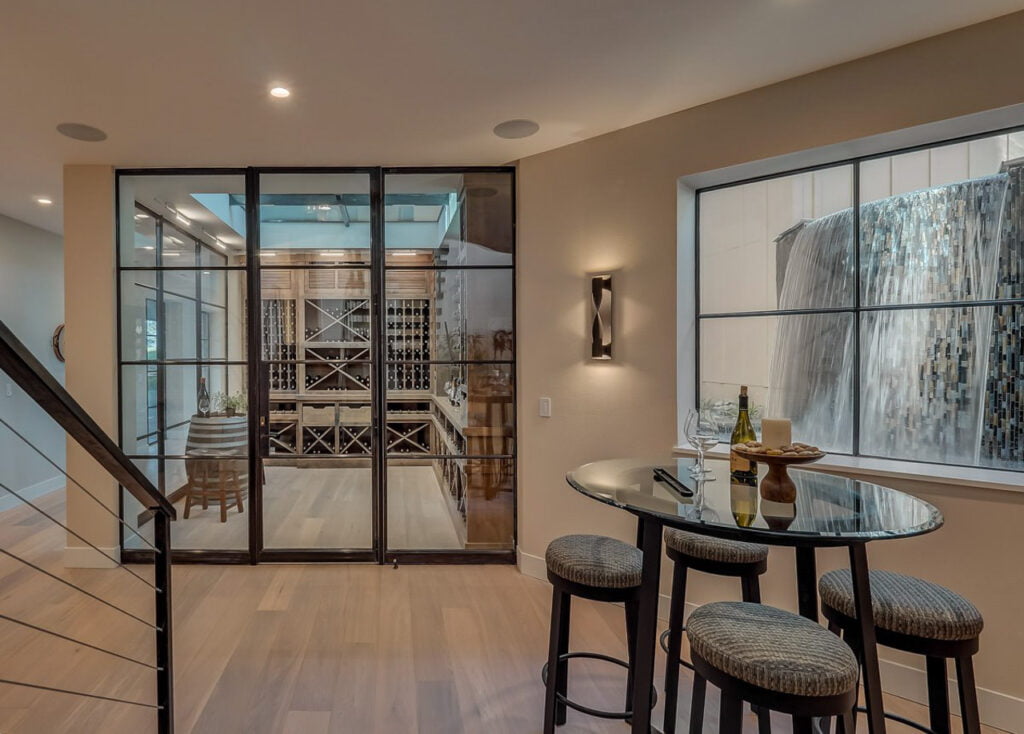
Omnia Wine Cellar Enclosure
Our Omnia enclosure system is identical to our Nexus system in every way, with one key exception; it’s designed for installation into a rough opening. This makes it ideal for construction or renovation projects. Once installed, the fixing system is hidden within the wall, for a clean finish with the narrowest profile of all our wine cellar systems.
Thermally-broken frames with insulated double glazing and genuine bronze muntin bars create a characterful aesthetic that delivers energy-efficient protection for your wine collection.
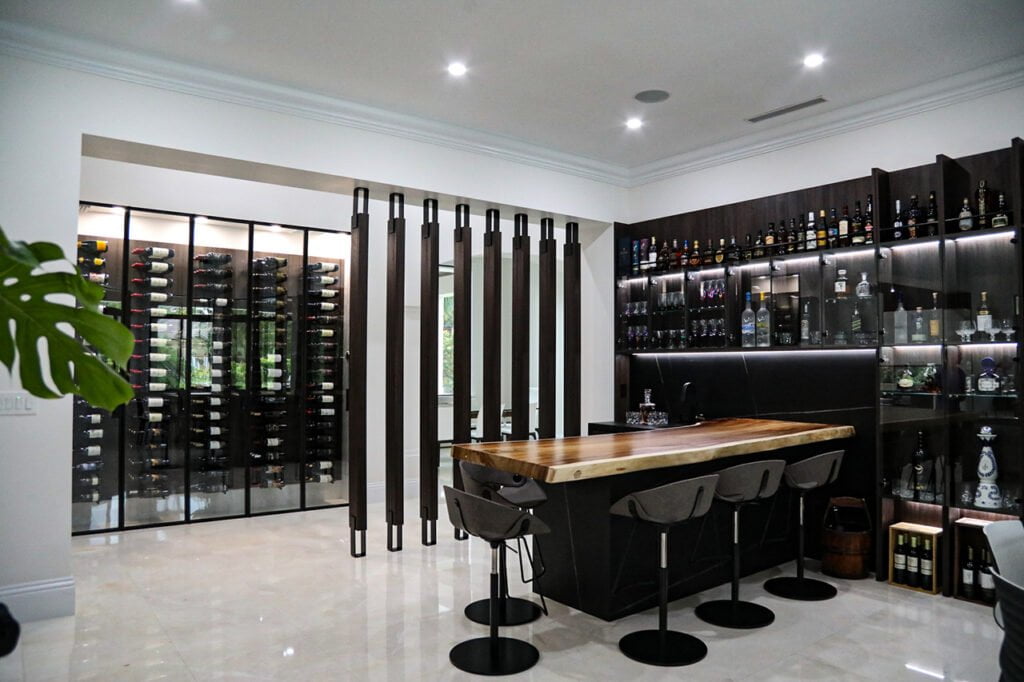
Revival Wine Cellar Enclosure
Inspired by the trend towards frameless wine cellar doors, Revival is our most minimalist enclosure system, and delivers beautifully crisp aesthetics for storage of wine collections.
Revival’s solid bronze frames are incredibly narrow, and therefore don’t require a thermal break – but they are still perfectly adapted for efficient, chilled wine storage. There are no muntin bars, and each panel is fitted with insulated glass, silicone weatherstripping and multipoint locks. As with our Nexus and Omnia systems, Revival can be configured to any layout and is available in 5 hand-rubbed patina finishes.
Here’s a handy chart to help you compare our wine cellar systems:
| Feature | Revival | Nexus/Omnia |
|---|---|---|
| Insulated Glass Unit | ¾” | 1″ |
| Locking Hardware | 2- to 3-point | 5-point |
| Bronze Content | Standard | More than 2× Revival |
| Thermal Break | No | Yes (Polyamide barrier) |
| Design Options | One-lite only | Supports true divided lites |
| Max Door Size | 36″ x 108″ | 42″ x 120″ |
| Price Point | $$ | $$$$ |
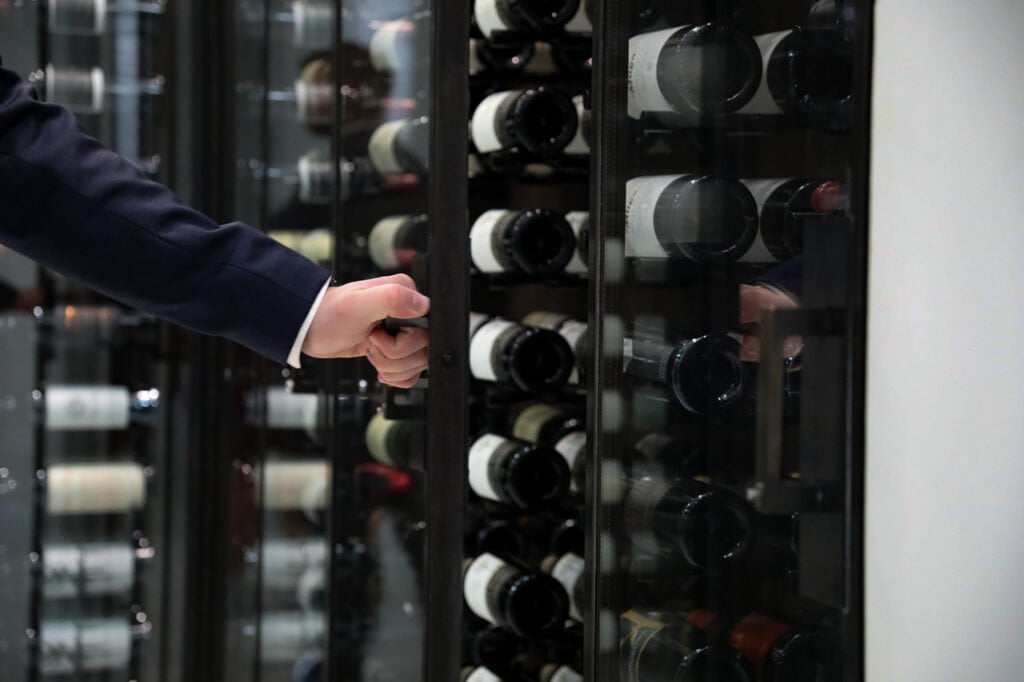
Which wine cellar enclosure is best suited to my project?
Every Renaissance enclosure — whether Revival or Nexus — is engineered to perform flawlessly in any climate, from high-humidity coastal homes to chilled hospitality spaces. There is no wrong choice when it comes to functionality. The distinction lies in taste, tone, and architectural intent.
If your vision leans toward minimalism, Revival offers quiet luxury at its most refined. With ultra-slim bronze frames and no visual interruptions, it’s a study in restraint – allowing the collection to take center stage behind crystal-clear insulated glass. Ideal for contemporary interiors or spaces that call for subtle elegance, Revival is understated, modern, and effortlessly beautiful.
For designs that call for more visual presence, Nexus and Omnia have a commanding presence. With bold bronze sightlines inspired by historic factory windows, they bring rich materiality, timeless geometry, and distinctive character to any space. They’re a showpiece – unapologetically architectural, deeply luxurious, and made for clients who want their wine room to be a statement of craft and permanence.
Both systems can be fully customized and are available in five hand-applied patinas. The right choice depends not on performance, but on the story you want to tell.
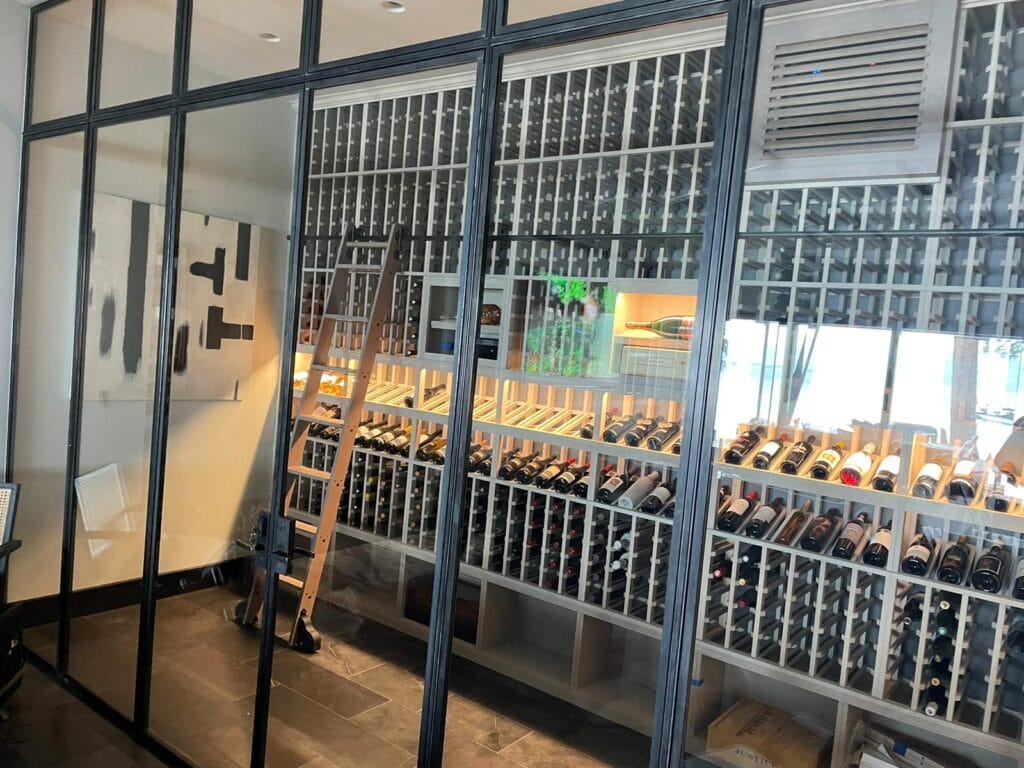
Contemporary wine cellars
For example, in a very contemporary design scheme, you might opt for horizontal muntin bars only, evoking a postmodern look that resonates with a variety of architecture styles from the 1930s onwards. To add an even more modern feel, selecting our charcoal patina emphasises the crisp lines while still allowing the warmth of the bronze underneath to shine through.
Classic wine cellars
For a more classic or traditional interior, specifying more lites (with vertical and horizontal muntins creating that timeless ‘factory window’ look) and selecting a warmer shade, such as chestnut or even a natural unlacquered finish, lends more character to the wine cellar. You can read more about our finish options here.
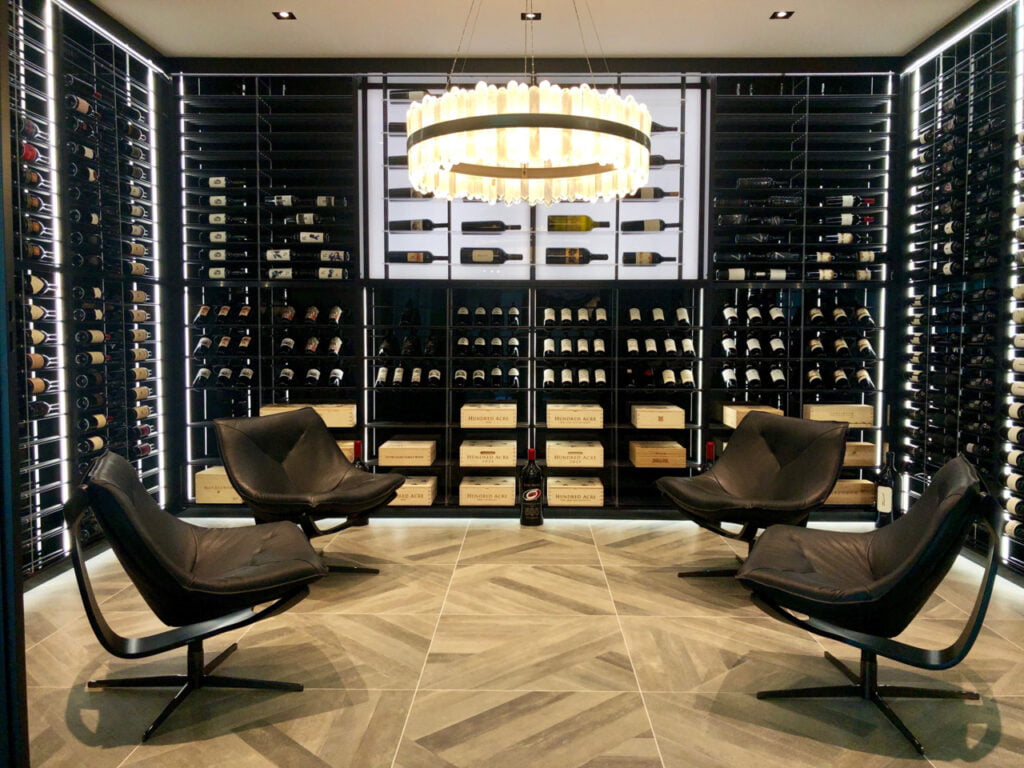
Temperature control & wine preservation
As already discussed, Renaissance’s Nexus, Revival and Omnia enclosure systems are designed to support climate-controlled wine storage, delivering the same performance as a refrigerator door, with the added benefit of a lockable enclosure. There are three major factors to consider when it comes to wine storage – temperature, humidity and light. Let’s take a closer look.
What temperature should wines be stored at?
Wine storage is both a science and an art. Temperature is the single most important factor in preserving wine. Whether red, white, or sparkling, all wines age best when stored at a consistent 55°F – a stable environment that allows character to evolve slowly, without compromise.
Even the most prestigious vintages are vulnerable to heat. Elevated temperatures accelerate wine oxidation, turning complexity into sourness. In warm or humid climates, maintaining that ideal temperature becomes a necessity – not a luxury.
Our Nexus and Omnia systems are built with thermal breaks using precision-engineered polyamide strips — a method that minimizes thermal transfer while maintaining the integrity of the solid bronze frame. This protects against warping, shrinkage, and condensation.
Paired with insulated glass, multi-point locking, and silicone bulb weatherstripping, our enclosures act as a barrier between your collection and the elements — preserving what matters, and reducing energy costs along the way.

Why does wine need humidity?
Wine bottles need to be stored at a humidity between 50-80% to prevent the corks from drying out, allowing oxygen to get into the bottle and causing premature ageing of the wine. In very dry climates, this may mean storing the wine in a sealed enclosure with an HVAC system that has a built-in humidifier. It’s vital that the doors form an airtight seal to prevent air egress and reduce the cost of running this equipment.
Why do I need to protect wine from light?
Most wines, but particularly reds, are sensitive to UV light, which can affect the taste but also the color and aroma of the wine, a phenomenon known in the industry as ‘light strike’.
The ultraviolet rays in sunlight can have an effect on the naturally occurring riboflavin and pantothenic acid in the wine, causing chemical reactions with the wine’s amino acids. The outcome of this is the production of sulphur, which causes unpleasant tastes and aromas within the wine – typically an acidic flavor and a smell of sulfur or cabbage! To prevent this, wine cellars that are exposed to significant levels of UV – for example, in open-plan rooms – can be fitted with wine glass that has UV filters applied to its surface.
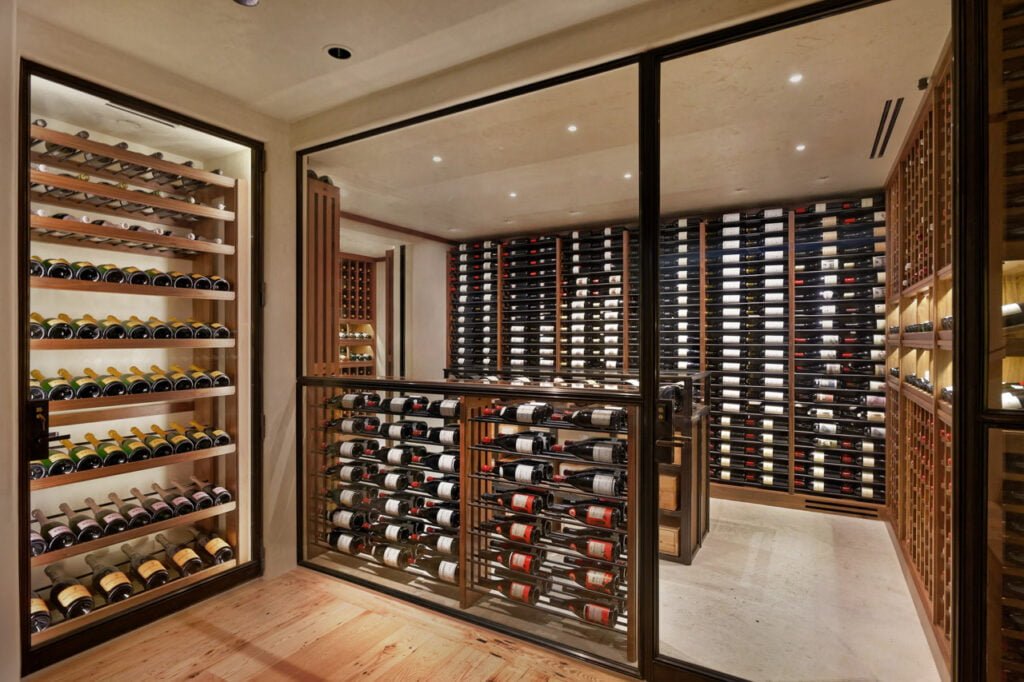
Custom Wine Cellar Layouts
When it comes to the layout of your wine cellar, the only real limits are the constraints of the architecture – and your imagination. All three of our wine cellar enclosure systems can be used to craft freestanding or alcove wine cellars in any size or shape. We can custom manufacture wine cellar doors to any height – ideal for high-ceilinged period homes, or for tucking a dainty wine cellar into that awkward space under the stairs. We work closely with wine cellar dealers all over the country to ensure your wine cellar enclosure perfectly complements your preferred wine rack system for a cohesive look that enhances any space. To start your Renaissance journey, find your nearest wine cellar dealer or simply get in touch to discuss your needs.


